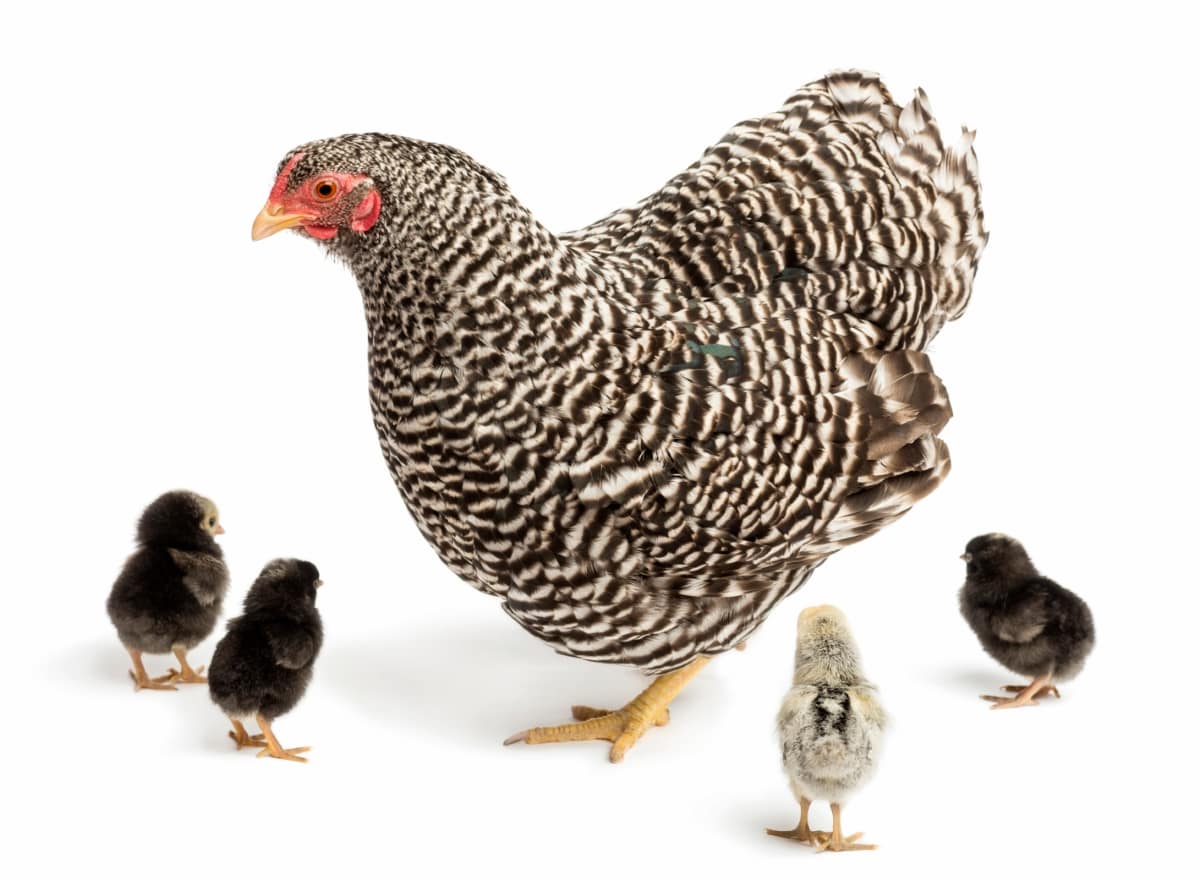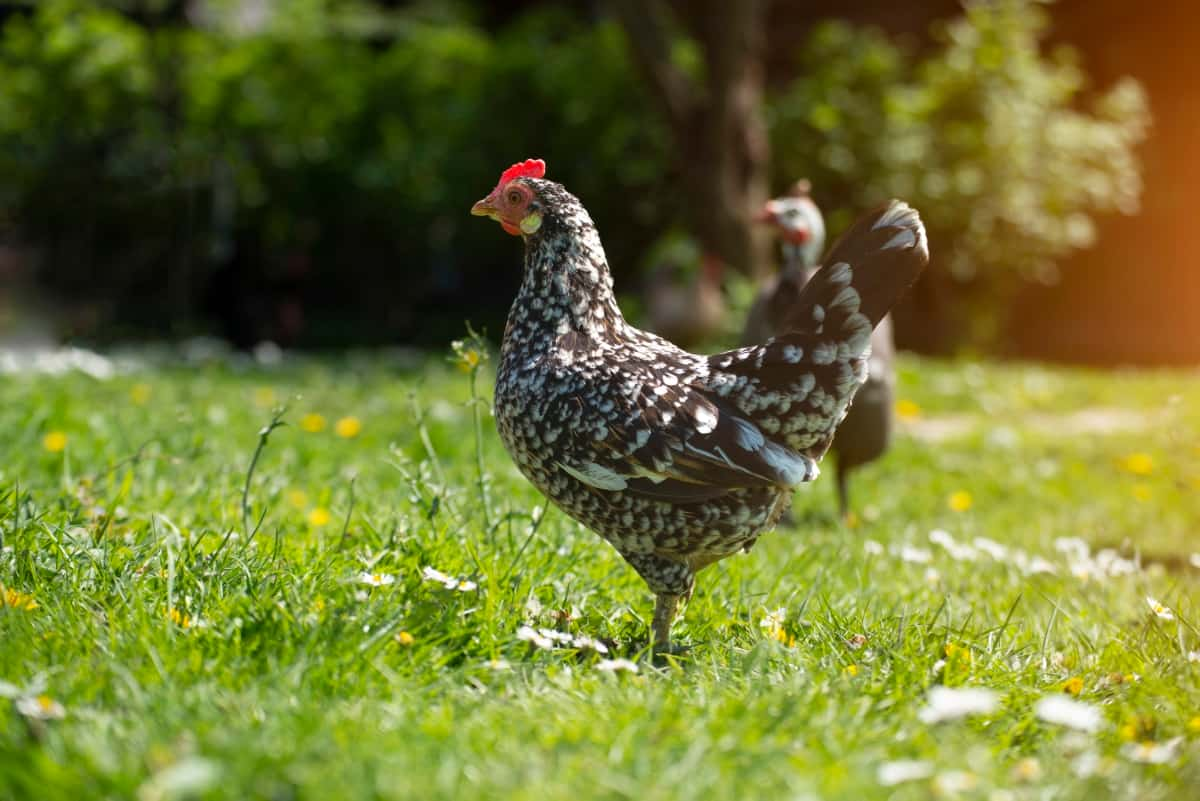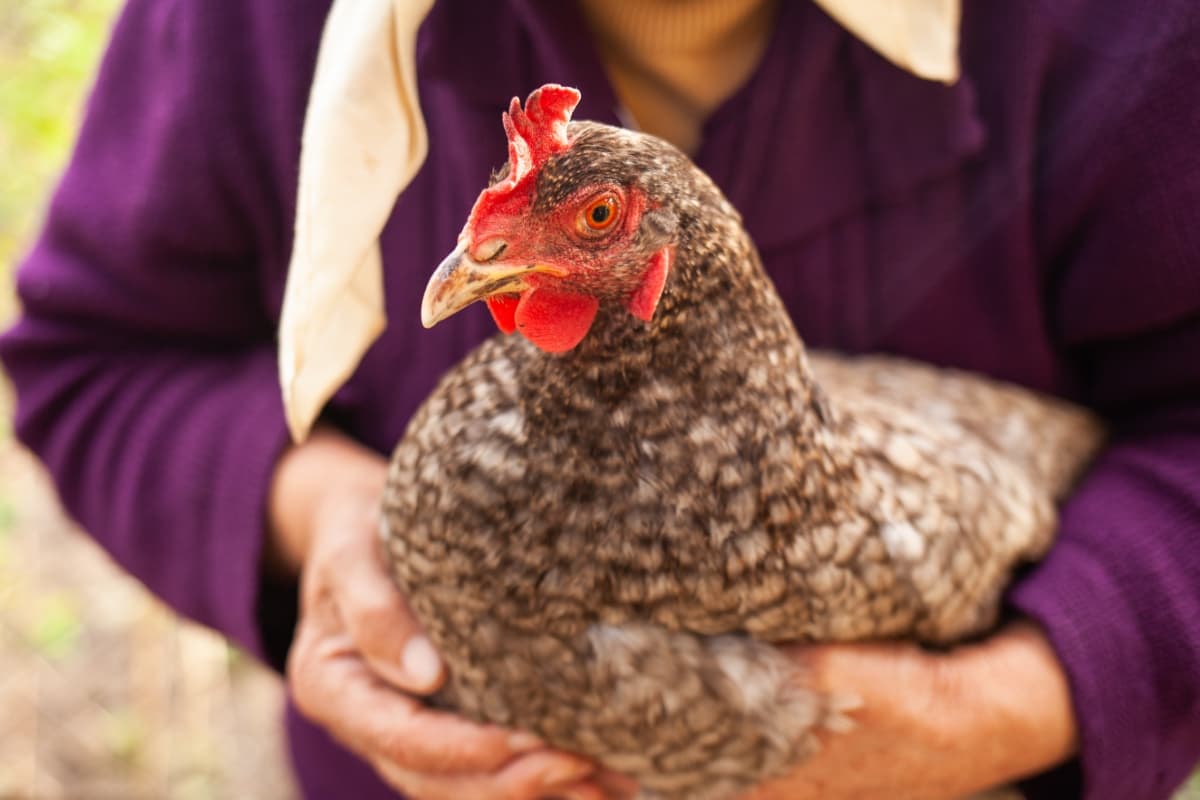Cuckoo Marans chickens are a popular breed among poultry enthusiasts for their unique feather patterns and the rich, chocolate-brown eggs they lay. Originating from Marans, France, these chickens are valued for their egg production hardy nature, and adaptability, making them ideal for backyard poultry.

Raising Cuckoo Marans involves understanding their care guide, which includes their diet, housing, and health management. The breed is known for its friendly temperament, making them a great addition to mixed flocks. However, it’s important to consider Cuckoo Marans vs. other Marans and breeds like the Barred Rock for their specific needs and characteristics. Breeding Cuckoo Marans chickens requires knowledge of incubating their eggs and chick care to ensure healthy growth and development.
All You Need to Know About Cuckoo Marans Chicken
Origin and History
The Cuckoo Marans chicken breed originates in the town of Marans, France, where they were developed for their exceptional egg-laying capabilities, particularly the dark chocolate color of the eggs. Over the years, they have gained popularity worldwide, especially among those interested in enhancing the color variety of their egg baskets. Their history is marked by a focus on improving their laying abilities and meat quality, making them a dual-purpose breed that is as practical as it is visually appealing.
Breed Characteristics and Appearance
Cuckoo Marans are characterized by their striking feather patterns, which resemble the plumage of a cuckoo bird, hence the name. This patterning is due to the barring gene, which gives each feather a mix of light and dark bars, creating a camouflage effect. Another notable characteristic is the Cuckoo Marans egg color, a deep chocolate brown highly sought after by poultry enthusiasts. When considering the purchase of these chickens, Cuckoo Maran chicken prices can vary widely, typically ranging from $5 to $20 per chick, depending on the quality and the breeder.
Cuckoo Marans Chicken Lifespan
Cuckoo Marans chickens have a lifespan ranging from 6 to 8 years, influenced by diet, housing, and overall care. A conducive environment and attentive care can help maximize their lifespan, allowing them to thrive for many years in a backyard setting.
Physical Features of Cuckoo Marans
Size and Weight
Adult Cuckoo Marans chickens are medium to large, with roosters weighing around 7 to 8 pounds and hens slightly lighter at 5 to 6 pounds. Their robust build is one of the breed’s distinguishing features, contributing to their resilience in various climates and conditions.
Feathering and Color Patterns
The feathering of Cuckoo Marans is dense and tight, providing good insulation against cold weather. The color patterns of their feathers are particularly notable, with alternating dark and light bars that give them a distinctive and attractive appearance. This barring makes them stand out visually and serves as a protective camouflage against predators.
Temperament and Behavior
Social Behavior
Cuckoo Marans chickens are known for their docile and friendly social behavior, making them excellent additions to mixed flocks. They tend to get along well with other chickens and are not typically aggressive, which is ideal for backyard poultry enthusiasts looking for a harmonious coop environment.
Compatibility with Other Breeds
Regarding compatibility with other breeds, Cuckoo Marans are generally very adaptable. Their calm nature allows them to integrate well with other chicken breeds, making them a versatile choice for diversifying their flocks without causing undue stress or aggression among the birds.
In case you missed it: Ultimate Guide to Buckeye Chicken: Discover from Raising Facts to Breed Profile

Egg Production
Egg Color and Size
Cuckoo Marans are celebrated for their egg production, particularly the unique color of their eggs, which range from a rich chocolate brown to a deeper, almost burgundy shade. The eggs are also good-sized, typically weighing around 55 to 65 grams, making them a substantial addition to any egg basket.
Laying Frequency and Seasonality
Cuckoo Marans hens have a moderate to high egg-laying frequency, typically laying around 150 to 200 eggs annually. Environmental factors can influence their laying seasonality, but with proper care, they can maintain a consistent laying pattern throughout most of the year, even in colder climates.
Caring for Cuckoo Marans
Housing and Space Requirements
Cuckoo Marans, chicken coop requirements, include ample space for movement and exercise, as they are an active breed. It’s recommended to provide at least 4 square feet of space per chicken within the coop and between 8 to 10 square feet per chicken in an outdoor run. This allocation ensures ample room for roaming, foraging, and engaging in natural behaviors, preventing overcrowding.
Diet and Nutrition
The best diet for Cuckoo Marans includes a balanced chicken feed with adequate protein to support egg production and access to fresh greens, insects, and grains. Supplemental feeding practices can include offering calcium sources like oyster shells for eggshell strength and grit to aid digestion, ensuring their nutritional needs are fully met for optimal health and productivity.
Health and Wellness
Common Health Issues and Prevention
Health issues in Cuckoo Marans can include common poultry ailments such as respiratory infections, parasitic infestations, and digestive troubles. Ensuring cleanliness, offering a balanced diet, and vigilantly monitoring the flock for early indications of sickness are essential measures for prevention.
Regular Health Checks and Vaccinations
Regular health checks and vaccinations are crucial in maintaining the health and wellness of Cuckoo Marans. Routine examinations can help in the early detection of potential health issues, while vaccinations can prevent common infectious diseases. A consistent healthcare routine, including deworming and parasite control, is essential for the longevity and vitality of the flock.
Breeding Cuckoo Marans
Selecting Breeding Stock
Breeding Cuckoo Marans chickens successfully begins with the careful selection of breeding stock. It’s important to choose healthy, robust birds that exhibit strong breed characteristics, such as the distinct feather patterns of Cuckoo Marans and their renowned egg color. Look for birds with good temperament, physical conformation, and proven fertility. This ensures the continuation of desirable traits and maintains the breed’s quality in future generations.
Incubation and Hatching
Incubation and hatching of Cuckoo Marans eggs require attention to detail and proper equipment. Eggs should be incubated at a steady temperature of approximately 99.5°F with a humidity level of around 55-60%, which should be increased to 65-70% during the last few days before hatching. Turning the eggs several times daily until just before hatching is also crucial. Successful incubation results in healthy chicks that carry the valued traits of the Cuckoo Marans breed, contributing to the flock’s diversity and vitality.
In case you missed it: Bionda Piemontese Chicken Facts: Ultimate Guide Breeding, Raising and Care

Raising Chicks
Brooder Setup and Temperature Management
A well-designed brooder setup is essential for raising Cuckoo Maran chicks. The brooder should provide a warm, safe environment, with a temperature of 95°F for the first week, decreasing by 5°F each week until the chicks are acclimated to the ambient temperature or have developed sufficient feathers. This temperature control is crucial for the chicks’ survival and growth, preventing issues related to overheating or chilling.
Growth Milestones and Development
Monitoring growth milestones and development in Cuckoo maran chicks is key to ensuring their health and well-being. Chicks should show steady weight gain, develop feathers according to expected timelines, and exhibit increasing levels of activity and curiosity. By monitoring these developmental indicators, early detection and intervention of potential issues can be facilitated, promoting the overall well-being of the flock.
Common Challenges and Solutions
Dealing with Predators
Predators pose a significant challenge to raising Cuckoo Marans, especially in backyard settings. Solutions include securing the coop and running with predator-proof fencing, using lockable doors for nighttime security, and employing deterrents like motion-activated lights or guard animals. These measures can help protect the flock from common predators such as foxes, raccoons, and birds of prey.
Managing Feather Pecking and Bullying
Feather pecking and bullying can occur within any flock, and Cuckoo Marans are no exception. To manage these behaviors, ensure the chickens have ample space, provide environmental enrichment to reduce boredom, and monitor flock dynamics closely. When required, isolating aggressive birds and ensuring a well-rounded diet can effectively minimize stress and hostility among the flock, fostering a peaceful cohabitation for the chickens.
In case you missed it: Wyandotte Chicken Egg Production: A Comprehensive Guide

Conclusion
Raising Cuckoo Marans chickens offers a rewarding experience for poultry enthusiasts, thanks to their distinctive appearance, unique egg color, and friendly temperament. Cuckoo Marans can thrive in diverse environments by providing proper care, nutrition, and protection, making them a valued addition to any backyard poultry setup.
Note: The images presented in this post are intended solely for representation purposes. The images are meant to serve as visual aids and should not be relied upon as accurate representations of their real-life counterparts.
- Feed Your Flock for Less: Top 10 Tips to Save on Chicken Feed
- Ultimate Guide to Ossabaw Island Hog: Breeding, Raising, Diet, and Care
- Hatching Answers: The Top 10 Reasons Your Chickens Aren’t Laying Eggs
- Eggs and Economics: Breaking Down the Cost of Raising Backyard Chickens
- Defend Your Greens: Proven Methods to Keep Iguanas Out of Your Garden
- Ultimate Guide to Cinnamon Queen Chicken: A Comprehensive Guide for Beginners
- Ultimate Guide to California Tan Chicken: Breeding, Raising, Diet, Egg-Production and Care
- Ultimate Guide to Marsh Daisy Chicken: Breeding, Raising, Diet, and Care
- 10 Types of Chicken Farming Businesses You Can Start for Profits